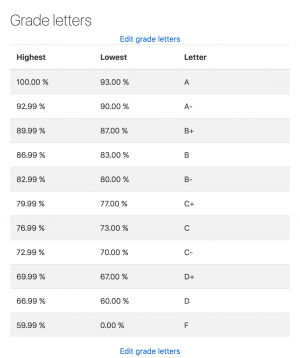With the enforcement of the shelter-in-place policy, students and teachers have been forced to attend school virtually, using applications like Google Meet or Zoom and staying up-to-date with regular Canvas assignments.
For the most part, these methods work for regular assignments, but with the lack of a real school environment, tests and quizzes have become significantly harder for teachers to administer. When students attend class at home, ensuring integrity is practically impossible. Because of this, many teachers are scrambling to find ways on how to fairly assess what students are learning.
One solution that district officials are considering is implementing a credit/no-credit grading system. Other local school districts such as Palo Alto have opted for this method, but it’s a bad idea.
The credit/no-credit system translates the letter grade of a student to either a pass or fail, where a pass will result in the student receiving credits for that class. Typically, in this system, a D or above is counted as a pass and doesn’t affect a student’s GPA, while an F is counted as a fail and counts negatively to the GPA.
This system doesn’t seem fair for students with high grades. For example, a student who would normally receive an A in a class would get the same result in their GPA as someone who would got a D. The GPA, which is supposed to be a representation of how well a student does in his courses, would fail to account for this semester. On the other hand, the current letter grade system can more precisely determine a student’s GPA.
The implementation of credit/no-credit would also fail to give students adequate credit for the work they have already put into their classes. This effort would have gone to waste.
Similarly, another big concern for students is how their AP courses will get factored into their GPA. Since the credit/no-credit system doesn’t affect a student’s GPA when they pass, students will miss out on the opportunity for the extra point AP courses offer for the work they put in.
This system would lead to a general lack of motivation for students because they can afford to not try their best in classes but still pass in the end. Indeed, some could probably take the rest of the semester off and still pass their classes.
This is a major issue considering that most future courses will build on what is covered in past classes. Students will ultimately struggle in more advanced classes when they haven’t established a proper foundation.
To top it all off, most of the semester has already gone by. There is little point switching grading systems right now. Instead, a better option would be to give students who can prove they have been affected by the current situation the chance to waive a grade or use the credit/no-credit system, rather than forcing this option on everyone.
To circumvent the problem of cheating on online exams, teachers can replace tests with projects to demonstrate student proficiency in that subject instead. Of course, this is only needed in courses where there is a definite right answer, like math or science; other subjects, like English, can continue to use essays or related assignments to assess students.
The credit/no-credit system fails to give students the credit they deserve. Given that the letter grade system is more versatile and accurate, switching to credit/no-credit for this semester is an idea that district leaders should reject.
























